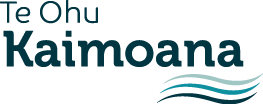Allocation
From 1992, the Commission worked towards developing a method for allocating the Fisheries Settlement assets to iwi.
The process of achieving agreement took approximately 12 years as differing views were put forward by iwi groups and the wider Māori community on how the assets should be allocated. Some iwi advocated for the settlement to be distributed mostly on the basis of the length of an iwi’s coastline while others promoted a method determined by the population of each iwi. The process was further complicated by legal action taken by certain groups that sought to have the settlement allocated to groups not recognised as traditional iwi.
In 2001, the Commission put forward allocation options for consideration by iwi. The proposals outlined in a document entitled He Anga Mua – A Path Ahead ranged from allocating the entire Settlement to iwi organisations through to holding all of the assets in a central pūtea and managing them on behalf of all iwi, with annual dividends paid.
At that time, the assets were estimated at over $500 million in value, including the 50 percent shareholding in Sealord Group Limited, the wholly owned Moana Pacific Fisheries Limited, Pacific Marine Farms Limited, Chatham Processing Limited and the quota shares held by the Commission in trust to be allocated to iwi.
The Commission embarked on an extensive round of consultation in respect of the He Anga Mua proposals. More than 200 written and oral submissions were received by the Commission and these contributed towards the development of a single method of allocation. In August 2002, a single model for allocation was produced by the Commission and outlined in Ahu Whakamua – Report for Agreement.
Ahu Whakamua balanced a broad range of competing interests designed to ensure that Māori would be able to participate and prosper in the business and activity of fishing. The Commission embarked on a second round of consultation to explain the single model and sought agreement from iwi to report the model, along with a draft proposed Māori Fisheries Act, to the Minister of Fisheries. Ahu Whakamua sought to maximise the agreement of iwi and Māori, achieving the support of 93.1 percent of iwi, representing 96.7 percent of iwi-affiliated Māori to proceed with reporting the method for allocation to the Minister. The Commission also received indications of support from urban Māori organisations that were also actively engaged in the consultation and agreement process.

